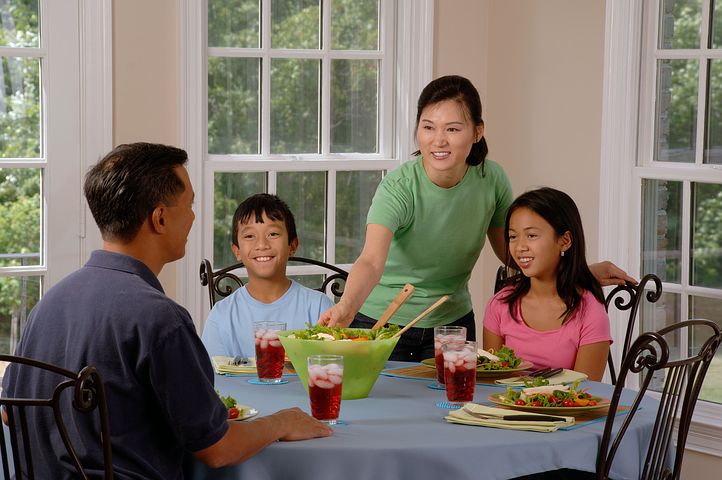In our society, where consumers describe feeling overscheduled, under rested, and time-squeezed, the mandate for convenience has never seemed more important. And yet, the notion of convenience has evolved beyond seeking quick-and-easy solutions to encompassing aspirations for empowerment, partnership and personalization. We have a fresh perspective on the new convenience and its emergence from a culturewide reassessment of what it means to achieve value from food experiences.
More hours worked and longer commutes contribute to a sense of being time starved. Gender roles around household tasks, including food preparation and cleanup, continue to shift. This means that more men are increasing their contributions to daily tasks like cooking and cleaning. Women still outpace men in terms of the minutes and hours doing such tasks, but the gap is not as big as it was 40 years ago.
Where have parents put that time? Both men and women have each added more hours a week to their childcare duties. Have parents simply robbed Peter to pay Paul? Or is it merely a re-shifting of priorities as our cultural ideals about what’s most important have changed? Either way, these are just a few of many different societal patterns that contribute to the juggling act that many American families feel they are trying to master. Sometimes, they feel they are succeeding, oftentimes, however, the opposite is true: More than half of parents say it is somewhat, if not very, difficult to manage work and family.
And as most of know, feeling overwhelmed is not just something modern families deal with, it’s a phenomenon of modern life. According to the Health + Wellness 2019: From Moderation to Mindfulness report, dealing with anxiety or stress is the top health issue among American households with 63% of consumers saying they are either treating or preventing anxiety or stress. The surge in the management of anxiety or stress is mostly driven by younger consumers, millennials and Gen Z. The fallout of all this busyness and stress is its impact on our food lives. There is a significant gap between how we aspire to eat and how we actually manage food on a day-to-day basis.
Most consumers still believe in and aspire to an ideal — a healthy meal, made from scratch, enjoyed with others — that stands in stark contrast to the reality of most of the meals. It’s this lingering framework in our imaginations about our lives being organized around meals. The reality is that our lives are organized around work. So, consumers have to work around barriers as they manage the modern-day priorities of eating. The Transformation of the American Meal 2017 report found that some of the top challenges consumers face are lack of time and energy, changing old habits, trying to please everyone, and managing personal and others’ schedules.
Given these aspirations and challenges, the call for convenience has never been louder, though convenience is not new. The original objective of convenience was about providing a solution to the idealized dinner. Traditional convenience was:
- outsourced preparation, low touch, no work, replaces cooking
- minimal time, low commitment, heat n’ serve, complete solution
- easy to find, readily available, quick stop retail, mainstream grocery channel
This notion of convenience emerges from the 1950s, coincidentally the same period of time we so often idealize as the epitome of traditional meal ritual and scratch cooking.
The desire for convenience is the number one single need state when you look across all eating occasions, according to findings from the Hartman Eating Occasions Compass database. It’s more than the desire for simple ingredients, unique flavor or positive nutrition. Desire for convenience is a key trend, if not a cultural value. Convenience, not just for the sake of convenience, but as something in service of other food and lifestyle aspirations.
Much like wellness and value, consumers’ ideas of what convenience means have matured. The desire for quick and easy is increasingly matched by an unwillingness to sacrifice flexibility in choice, a positive experience, and personal needs. With more products and retailers catering to the demands of the new convenience — from prepared foods to meal kits to click-and-collect services and online delivery — consumers can factor these into their shopping habits.
New convenience is not just task management. It’s coming up with something different. In a context where many consumers can get food fairly easily, the biggest challenge isn’t about getting food to the table. It’s aligning the quick and easy choices one has with more experiential desires. The new convenience is the balance of pragmatism and aspiration.
Related stories:
- Today’s more veggies, less meat culture: What’s behind the momentum into the mainstream?
- Here’s what healthy means now
- 3 ways to capture Gen Z’s attention with the right sponsorship choices
As CEO of The Hartman Group, Laurie Demeritt drives the vision, strategy, operations and results-oriented culture for the company’s associates as The Hartman Group furthers its offerings of tactical thinking, consumer and market intelligence, cultural competency and innovative intellectual capital to a global marketplace.
_____________________________________
If you enjoyed this article, sign up for GMA SmartBrief or Restaurant Smartbrief to get news like this in your inbox, or check out all of SmartBrief’s food and travel newsletters as we offer more than 30 newsletters covering the food and travel industries from restaurants, food retail and food manufacturing to business travel, the airline and hotel industries and gaming.
